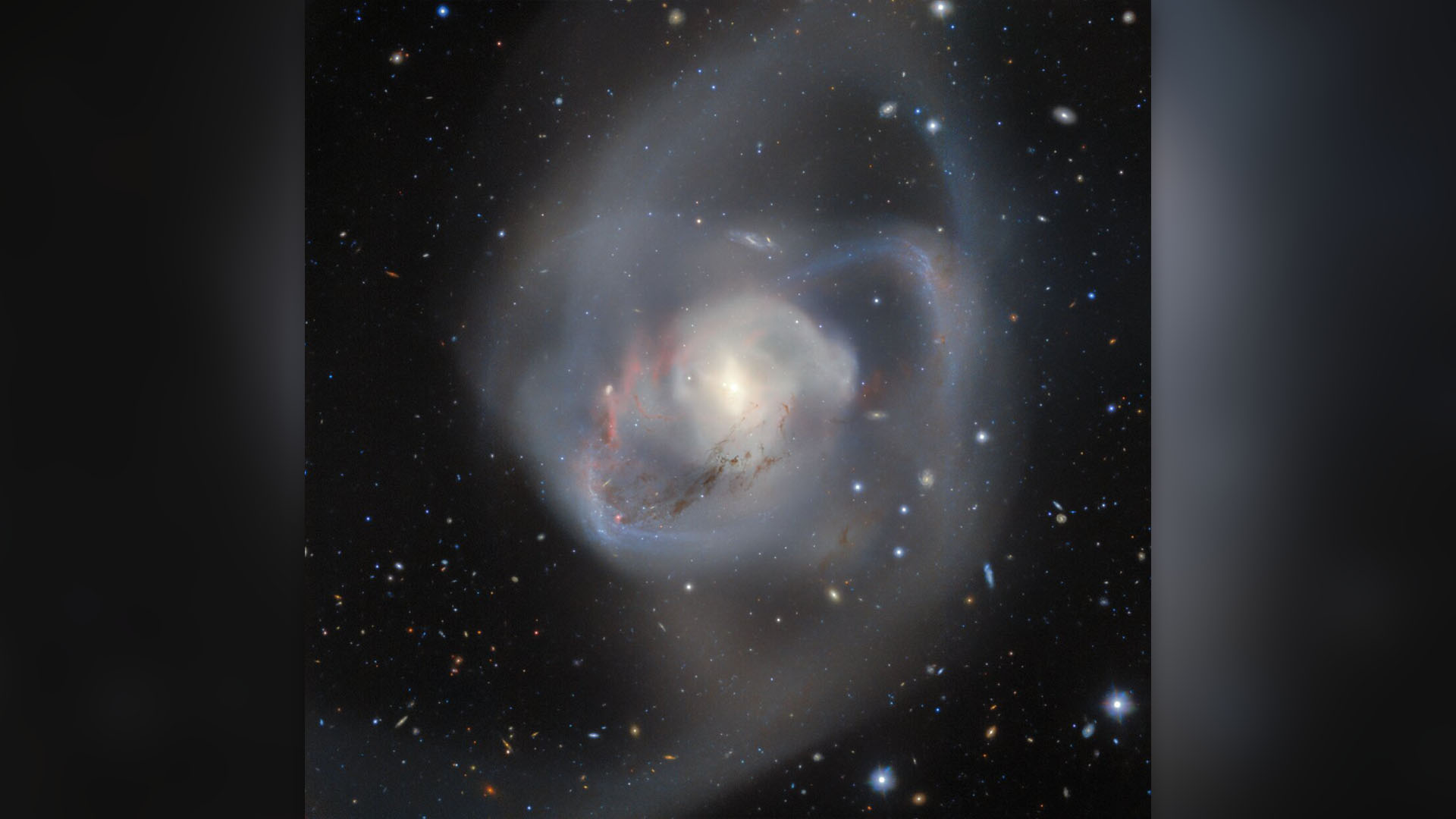
What it is: NGC 7727, the tangled aftermath of two spiral galaxies colliding.
When it was taken: Oct. 25, 2023.
Where it is: Between 73 million and 90 million light-years away in the constellation Aquarius.
Where it was taken: Cerro Pachón mountain in Chile
Why it's so special: The image not only shows the ultimate fate of our Milky Way galaxy but also hides the closest pair of supermassive black holes to Earth ever recorded.
The image, which was captured by the International Gemini Observatory and is also available as a zoomable version, shows bands of interstellar dust and gas. It's the messy aftermath of two spiral galaxies colliding about a billion years ago.
Spiral galaxies have twisted arms full of stars that make them look like giant rotating pinwheels. When they merge, they form chaotic elliptical galaxies, which astronomers predict is happening now to NGC 7727. All elliptical galaxies are thought to originate from collisions and mergers with spirals, according to NASA.
What makes NGC 7727 particularly interesting is what's happening to the nuclei of the two formerly separate galaxies. Inside each is a supermassive black hole, according to research published in 2021. At just 1,600 light-years apart, their gravitational tug-of-war is the cause of the chaotic mess of stars and nebulas scattered across NGC 7727.
However, these supermassive black holes are not equally matched. One is 6.3 million times the mass of the sun, and the other is as massive as 154 million suns. Scientists think the two monsters will merge in about 250 million years, producing gravitational waves, or ripples across space-time first detected in 2015.
NGC 7727 is a snapshot of the future for our Milky Way galaxy, which will gradually merge with the Andromeda galaxy (M31) in about 4 billion years. The image of NGC 7727 was taken by Gemini South, a 26-foot-wide (8.1 meters) optical/infrared telescope in the foothills of the Andes that is operated by the National Science Foundation's NOIRLab. It has an identical twin, Gemini North, atop Mauna Kea in Hawaii. Together, they cover the entire night sky from their respective hemispheres.







